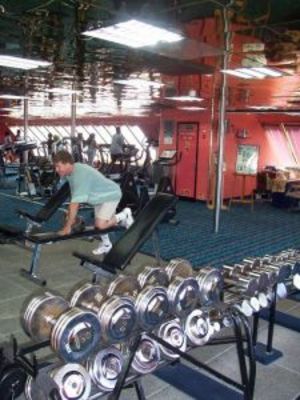If you’re elderly, you should strength train. This means lift weights. Elderly women, especially, should lift weights, which is, quite literally, training for strength. I’m a certified personal trainer, and the latest research, like much previous research on this topic, once again shows that strength training is extremely beneficial for the elderly population.
In elderly men and women, strength training really does make a big difference. And more evidence comes from a study carried out by the University of Michigan Health System. So if you’re elderly, ask yourself this question: Do you want to dance at the next wedding of a grandchild? Or would you rather be pushed in a wheelchair into the reception hall?
What are the best strength training routines for the elderly population? #1) Standing up from a chair and sitting down – 10-20 times in a row. Don’t plop down; lower into the chair with control every time. #2) Pushups, modified to your level, such as knees on floor, or standing pushup in which you’re pushing off a wall or railing. #3) Squats with light hand placement on secure object for balance, #4) Deadlifts (what are these?), and #5) Leg presses (what are these?).
Loss of muscle, beginning at around age 30, starts occurring in people who don’t do strength training – structured weight-bearing workouts. This muscle loss equates to about five pounds per decade. So even though an elderly woman may still be able to “fit” into her wedding dress of decades past, her body composition has radically changed if she’s been losing five pounds of muscle every decade!
The ratio of fat to muscle has shifted; she weighs about the same, and still fits into the wedding dress, but her body is composed of much more fat, and much less muscle.
The much less muscle (which weighs more than fat), is why her weight on the scale is about the same. But internally, she has lost significant health, vitality and strength. This deterioration of body composition exists also in elderly men who have never strength trained. “Elderly” in this article refers to 65-plus.
“Our analyses of current research show that the most important factor in somebody’s function is their strength capacity,” states Mark Peterson, Ph.D., a research fellow in the U-M Physical Activity and Exercise Intervention Research Laboratory, which is at the Department of Physical Medicine and Rehabilitation.
He adds: “No matter what age an individual is, they can experience significant strength improvement with progressive resistance exercise even into the eighth and ninth decades of life.”
Dr. Peterson recommends that elderly people strength train at least twice a week. I agree, and it can be done four times a week. Dr. Peterson recommends compound routines, meaning, those that engage more than one joint and muscle group during the movement.
Another good strength training exercise for the elderly is the row. At the gym are machines in which you sit, then pull handles towards your chest against resistance. A rowing machine targets middle back muscles, plus some shoulder and arm muscles.
The best exercises that I just named are all compound strength training moves. At the gym, the bench press can replace pushups, or you can do both. An elderly person who’s strong doing body-weight-only squats, can progress to weighted squats on a Smith machine, or with holding dumbbells or weight plates.
We firmly believe based on this research that progressive resistance training should be encouraged among healthy older adults to help minimize the loss of muscle mass and strength as they age,” says Dr. Peterson.
Source: http://www.sciencedaily.com/releases/2011/03/110331163539.htm









